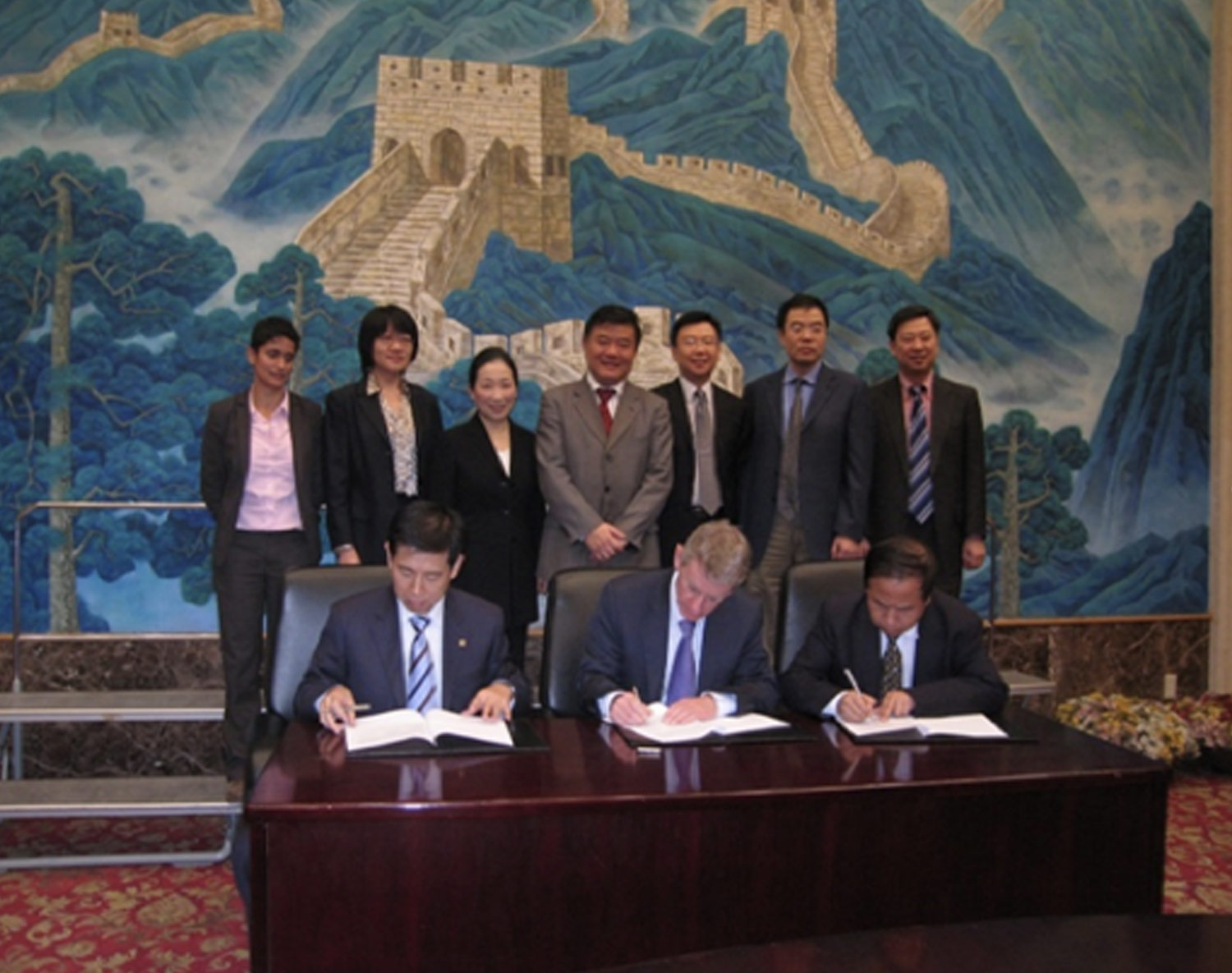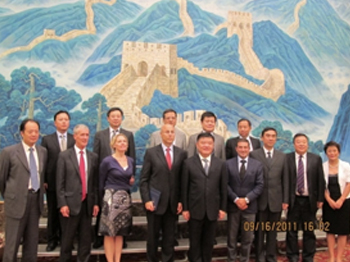Coming Rapidly of Age: Health Technology Assessment in China
Kun Zhao
Xue Li
Wudong Guo
Yue Xiao
China National Health Development Research Center, China
The Initial Stage: 1980s to 2010
Introducing Health Technology Assessment (HTA) to China
In the 1980s, Professor Chen Jie of Fudan University was the first person to bring the idea of HTA to China. Since then, he has been pushing for the development of HTA in China and raising awareness about HTA with health policy makers and health-related workers. With the expanding influence of HTA, the research unit at Fudan University was nominated as the ‘Key Laboratory’ by the Ministry of Health (MoH) in 2000. The lab conducted a series of academic HTA training workshops that introduced the HTA concept to professionals in China for the first time.
Setting up a HTA division at the national level
In 2008, a national HTA division was set up at the China National Health Development Research Center (CNHDRC) to support decision-making for policy makers. The first National HTA Forum for health policy makers at the provincial level was held by CNHDRC in 2010. Former president of the Health Technology Assessment international (HTAi), Clifford Goodman, and HTAi board members shared global HTA experiences to advocate for the importance of HTA. After discussions with HTAi, former Health Minister, Dr. Zhu Chen and other senior policy makers suggested that CNHDRC build multiple partnerships with international HTA organizations to improve HTA capacity in China. This would enable decisions for the 12th Five-Year Plan (2011-2015), especially with regards to major health programs and projects; improve health equity and efficiency; and provide affordable and high-quality care to the whole country.
Establishing international collaboration with the UK
In 2010, the National Institute for Health and Care Excellence (NICE), UK, officially joined forces with China on the Rural Health Reform Project (Figure 1). The aim of the pilot project was to facilitate health reform by linking clinical pathway development to provider payment reform by using HTA. This pilot project demonstrated how evidence-based HTA methods could change physicians’ behavior. The pilot project was then scaled up to include more than 1000 counties. CNHDRC has established a solid partnership with NICE, UK since then.

Figure 1. NICE, CMPC, and CHDRC sign a Memorandum of Understanding on the Rural Healthcare Reform
The Stable Stage: 2010 to 2015
2010 to 2015 marked the era of China’s 12th Five-Year Plan and a new round of health care reform. With the increasing adoption and success of HTA, the Chinese government started to use HTA to guide their decision-making. They believed that HTA could help them generate more evidence to support their decision-making, supported by CNHDRC’s continual efforts to strengthen evidence-based priority-setting in healthcare with various partnerships. At the same time, the HTA pilot project on evidence-based clinical pathway development linking to provider payment reform was also in line with the requirements of policy makers. As a result, more and more HTA projects were designated by MoH, Ministry of Human Resource and Social Security (MoHRSS), the World Health Organization (WHO), the World Bank (WB), and the United Nations International Children’s Emergency Fund (UNICEF) on a multitude of topics, such as drug resource allocation, devices, procedures, and vaccines.

Figure 2. Former Health Minister with HTAi Board Members
In 2011, the president of the Health Technology Assessment international (HTAi) and HTAi board members attended the second HTA seminar for policy makers held by CNHDRC and MoH (Figure 2). The goal of this policy forum was to raise the awareness of HTA with health policy makers. It should be noted that, the former Health Minister and senior policy maker at MoH, Dr. Chenzhu, met with HTAi board members to discuss HTA development in China and the potential role of HTA in the new round of Health System Reform.
Publication of the first HTA textbook
The first HTA textbook was published in China in 2014 (Figure 3). Compiled by Professor Chen Jie and Dr. Yu Dezhi from CNHDRC during the 12th Five-Year Plan, the book introduced the HTA concept and described classifications, study designs, approaches, and ways to conduct economic, social, and ethical analyses. The book provided the theoretical foundation for China’s HTA development during 2014.
The Speeding-Up Stage: 2016 to Today

Figure 3. First HTA textbook in China
Expanding HTA influence among policy makers
The intensive collaborations with HTAi, NICE, UK, and other international organizations, HTA has started to play a vital role in guiding and supporting decision-making. For example, CNHDRC, commissioned by the central government, has undertaken rapid reviews of HTAs on Da-Vinci Surgical Robots and Radiation Therapy Devices (Tomo, Cyber Knife). These HTAs helped with making decisions on the national procurement scheme during the 12th Five-Year Plan period and demonstrated how HTA could support policy makers’ need to make evidence-based decisions at a system level. Hence, at the beginning of the 13th Five-Year Plan (2016-2020), the MoH formally commissioned an HTA project on the most expensive radiation therapy devices (Proton and Heavy Ion Radiation Therapy Devices), showing that health policy makers are beginning to rely on HTA results and are willing to use HTA evidence to guide their decision-making.
Establishing the China HTA Network
In December 2016, under the leadership of CNHDRC, the China Health Technology Assessment Network was launched to develop methods and build capacity by engaging 29 agencies, universities, hospitals, and professional associations. Deputy Health Ministers Dr. Xiaowei Ma and Yixin Zeng attended the launch and emphasized the importance of HTA in containing medical costs and improving quality of care (Figure 4). This Network now has 34 members.
The executive committee of the Network includes policy makers from National Development and Reform Commission (NDRC), MoH, Ministry of Finance (MoF), and MoHRSS, who expressed their strong willingness to speed up the incorporation of HTA evidence into the policy-making process. Accordingly, the CNHDRC is in the process of developing an HTA manual, which will include working mechanisms and methodology for the network. It will be finished by June 2018.



Figure 4. China HTA Research Network Launch Meeting
HTA-related policies issued by the government
A series of documents related to HTA policies and procedures will be further explored in 2018. This shows a significant progress for building the Chinese HTA mechanism.
- In October 2016, the MoH issued the Guidance on Strengthening the Transferring and Transformation of New Innovative Health Technology, which emphasizes the role of HTA in adopting new technologies.
- In the Guidance on Strengthening HTA works in China, which will be issued at the end of April 2018, the government emphasized the importance of the development of HTA in China. This document is regarded as a milestone in China’s HTA.
Meanwhile, a series of government documents supporting the building of HTA mechanisms in China are on the way, such as:
- Guidance on Comprehensive Supervision and Regulation and Call for Pricing Negotiation between Industries and Government on High Value Consumable Medical Materials. Both documents emphasize the importance of HTA in supporting decision-making.
Most importantly, HTA has been written into the latest draft of the China Basic Health Law to protect the rights of HTA. This is the most fundamental document on guiding Chinese HTA development. In 2017, to move Chinese HTA development forward, the Bill & Melinda Gates Foundation (BMGF) supported CNHDRC to conduct research on HTA mechanism building and on the development of processes and methodologies through three HTA pilot cases. It’s expected that by June 2018, one HTA mechanism building report, one process guidance, one HTA methodology, and three HTA reports will be published.

